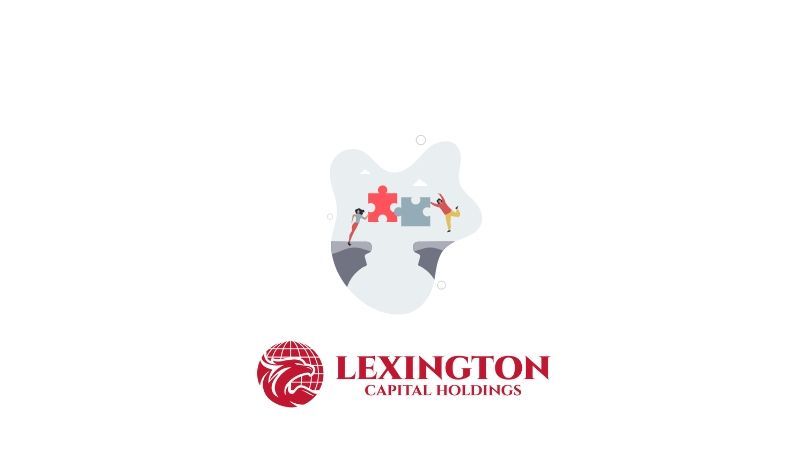Understanding Asset-Based Lending: A Guide for Business Owners
Understanding Asset-Based Lending: A Guide for Business Owners
Navigating the world of business financing can be complex, especially with the stringent requirements of traditional loans. Traditional loans often require strong credit scores and lengthy approval processes, making it difficult for some businesses to access the capital they need. This is where asset-based lending (ABL) comes into play as a flexible and accessible alternative. But what exactly is asset-based lending, and how can it benefit your business? Let's dive in.
What is Asset-Based Lending?
Asset-based lending is a type of financing where a business borrows money by using its assets as collateral. These assets can include accounts receivable, inventory, machinery, equipment, and real estate. The loan amount is typically determined by the value of these assets, providing businesses with a way to leverage their existing resources to obtain necessary funding.
How Does Asset-Based Lending Work?
Asset Valuation:
The first step in asset-based lending is to determine the value of the assets you wish to use as collateral. This often involves an appraisal or valuation process conducted by the lender.
Loan Agreement:
Once the assets are valued, the lender will outline the terms of the loan, including the borrowing base (the amount you can borrow), interest rates, and repayment terms.
Collateral Management: Throughout the loan period, the lender will monitor the value of the collateral. For example, if you use accounts receivable as collateral, the lender will keep track of your outstanding invoices to ensure they maintain their value.
Fund Disbursement:
After the agreement is finalized, funds are disbursed to your business. You can use these funds for various purposes, such as working capital, inventory purchases, or expanding operations.
Repayment and Monitoring:
Repayment terms will vary based on the agreement. Lenders will continue to monitor the collateral to ensure it retains its value and that the loan remains secure.
Benefits of Asset-Based Lending
Flexibility:
BL offers more flexibility than traditional loans, as it is based on the value of your assets rather than just credit scores or financial history.
Faster Access to Capital:
Since the loan is secured by assets, the approval process is typically quicker, allowing businesses to access funds more rapidly.
Improved Cash Flow:
ABL can provide a steady flow of working capital, helping businesses manage day-to-day operations and invest in growth opportunities.
Utilizing Existing Assets:
This type of lending allows businesses to leverage their existing assets, which might otherwise be underutilized.
Is Asset-Based Lending Right for Your Business?
Asset-based lending can be a valuable financing option for businesses that have significant assets but may not qualify for traditional loans. It is particularly beneficial for companies in industries with high-value inventory or receivables, such as manufacturing, wholesale, and distribution.
However, it's essential to understand the risks involved. Since your assets are used as collateral, there is a risk of losing them if you cannot meet the repayment terms. Therefore, it's crucial to have a solid repayment plan and ensure that the benefits outweigh the potential risks.
Conclusion
Asset-based lending provides a flexible and accessible financing solution for many businesses, leveraging existing assets to secure necessary funding. By understanding how ABL works and its benefits, you can make an informed decision about whether this type of financing is right for your business.

When you apply for business funding, your application goes through a critical stage—underwriting. This is where lenders evaluate risk and determine whether your business qualifies for financing, and under what terms. Understanding what underwriters look for can help you strengthen your application, avoid delays, and increase your approval odds.

Not every business enjoys a steady stream of income. For many companies—especially those in seasonal industries, contracting, or project-based work—revenue can shift dramatically from month to month. These ups and downs are normal, but they can make managing cash flow, payroll, and operating expenses challenging. At Lexington Capital Holdings, we understand that fluctuating revenue doesn’t mean instability—it just means you need the right financial tools to stay balanced and grow confidently.

The Challenge of Hyper-Growth For many startups, growth isn’t the problem—it’s managing it. Rapid scaling demands capital for hiring, marketing, technology, and operations. But too often, founders find themselves cash-strapped right when they need resources the most. Choosing the right financing strategy can be the difference between sustainable growth and burning out too soon.

When it comes to business financing, the terms you secure are just as important as the funding itself. Lower interest rates, flexible repayment schedules, and higher approval amounts can mean the difference between simply surviving and setting your business up to thrive. The good news? Business owners often have more negotiating power than they realize. At Lexington Capital Holdings, we’ve seen firsthand how preparation and strategy can help secure stronger terms. Here’s how you can do the same:

For many businesses, waiting on customer payments can feel like standing still when you’re ready to move forward. Delayed invoices, extended payment terms, or slow collections create cash flow gaps that make it harder to cover expenses, pay employees, or seize new opportunities. The truth is—even successful, profitable companies face this challenge. The key isn’t avoiding it, but managing it strategically with the right funding solutions

Securing business funding is a milestone—but the real impact comes from how you put that capital to work. Every dollar borrowed should fuel momentum, strengthen operations, and generate measurable returns. Unfortunately, too many businesses stop at “getting approved” and miss the chance to maximize their return on investment (ROI). At Lexington Capital Holdings, we believe funding isn’t just about access to capital—it’s about creating opportunity. Here’s how to ensure your financing delivers the highest ROI:

In today’s fast-paced business environment, standing out from the competition requires more than just great products and services—it takes strategy, timing, and smart financial decisions. One of the most overlooked tools in building and maintaining a competitive advantage is business financing. When leveraged correctly, financing doesn’t just help you “get by”; it can actually position your business to outpace competitors and capture new opportunities.

In business, surprises aren’t a matter of if—they’re a matter of when. Whether it’s a sudden equipment breakdown, an unexpected dip in sales, or a market shift that requires quick adaptation, unforeseen expenses can test even the most successful companies. The difference between thriving and struggling often comes down to how well you’ve prepared.

When most business owners hear the word debt, it sparks feelings of stress or risk. But here’s the truth—debt isn’t always a bad thing. In fact, when managed strategically, debt can become one of the most powerful tools to grow, stabilize, and scale your business. At Lexington Capital Holdings, we work with business owners every day who are navigating this very question: Is taking on debt the right move for me? Let’s break down the difference between “good” and “bad” debt so you can make informed financial decisions.

In today’s business world, financing options are everywhere—but choosing the right path can feel overwhelming. From traditional bank loans to alternative lending solutions, the fine print and fast-changing requirements often leave business owners spending more time deciphering funding terms than actually running their businesses. That’s where the value of a dedicated funding advisor truly shines. At Lexington Capital Holdings, we’ve seen firsthand how personalized guidance can transform the funding experience for business owners of all sizes.

